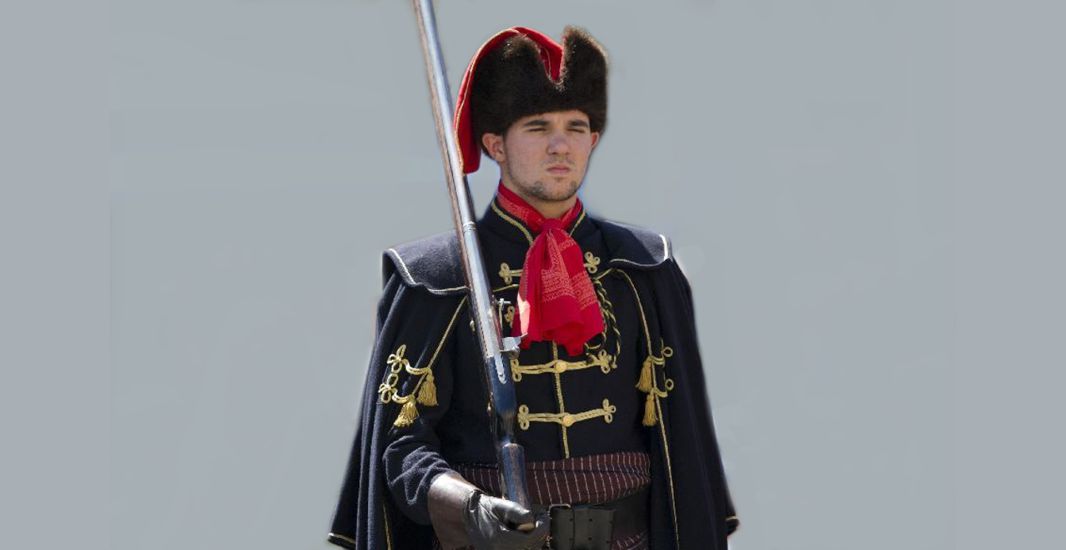Old history books share that it was a cravat that became the symbol of a small European nation and its beauty soon won over the world.
Many great inventions mark mankind, but this item influenced all of humanity. This little garment is the most widespread worn fashion detail in the world, and is owned by over 600 million people from around the world. They may not know it, but men and women everywhere are wearing around their neck a symbol that came from the soldiers of a small nation known as Croatia.
The invention of the necktie is directly connected with the Croatian soldiers. It is their symbol. The custom of wearing a necktie began with the wearing of the neckcloth and was typical of Croatian soldiers during the Thirty Years’ War in Europe (1618-1648).
The ancient Egypt is considered as the predecessor of the tie, where the square wide knot was tied around the neck and shoulders, signifying a high social status of the person that wore it. Also in China, the warriors of the Chinese emperor Ti (Chenga – Shih Huang Ti) wore a cloth wrapped around the neck, pointing to their rank. In ancient Rome’s art, people were often portrayed wearing parts of jewelry around the neck that quite resemble modern cravats.
Tying a scarf around the neck was an old custom and part of the costumes of many European nations. Wearing a piece of cloth around the neck has a long tradition in Croatia, too. Such a Croatian custom was mentioned in lots of historical books, as a visible part of national costumes from different parts of Croatia. For example, we can mention the town of Omišalj where men wear a scarf around the neck called facol, and according to the ancient Italian (Roman) habit it is called the focale. In Baranja – eastern Croatia, wearing a scarf around the neck is known as poša, and in northern Croatia the custom is known as rubec. Certainly, one of the oldest names for the cloth that men tie around the neck in Croatia originate from the surroundings of the village of Turopolje where such items are called podgutnica or podgutnjak.
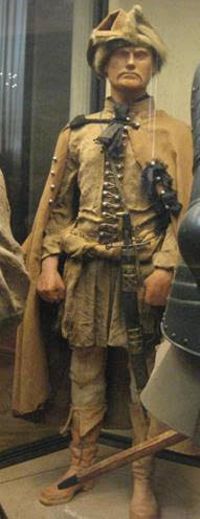 In some parts of Croatia, according to the folk tradition, girls and women who were saying goodbye to young men and husbands going to war used to give their scarves so the soldiers so the soldiers would not forget them when they were worlds away. By wearing a scarf, a man would show the loyalty to a girl or a woman. It is mentioned in many Croatian songs and folk tales upon the war. Although this custom is known to Croats, wrapping the neck of future warriors had a far more justified and understandable reasons.
In some parts of Croatia, according to the folk tradition, girls and women who were saying goodbye to young men and husbands going to war used to give their scarves so the soldiers so the soldiers would not forget them when they were worlds away. By wearing a scarf, a man would show the loyalty to a girl or a woman. It is mentioned in many Croatian songs and folk tales upon the war. Although this custom is known to Croats, wrapping the neck of future warriors had a far more justified and understandable reasons.
The cravat gradually evolved from an ordinary scarf around the neck, to an item that had multiple functions, not just that of being decorative. The Croatian soldiers going to war in unknown lands against unknown armies had to have some recognizable way of distinguishing one another from the enemy in the fury of battle. The visible red or black colors fluttering around the neck of Croatian soldiers made it easier for them to recognize each other on the battlefield and stay together. This scarf around the neck was a predecessor to the military label – marker on soldier uniforms.
The obligation of the nobles to respond to the royal call (the Habsburgs) for military service, made the Croats set off to the Thirty Years’ War although as a separate independent unit and under the command of the Croatian ruler called ban. Having experience in the previous wars with the Ottomans, they brought their own and improved mode of warfare. In the Thirty Years’ War, Croats participated as pedestrians and light horsemen and were the universal warriors of their time, and they were known for being highly-valued mercenaries in the Empire, Bavarian, Spanish, Danish and French armies. It is assumed that around 7,000 Croatian soldiers fought in various war periods. Croatian cavalry and infantry were then noted as extraordinarily efficient and celebrated in numerous battles.
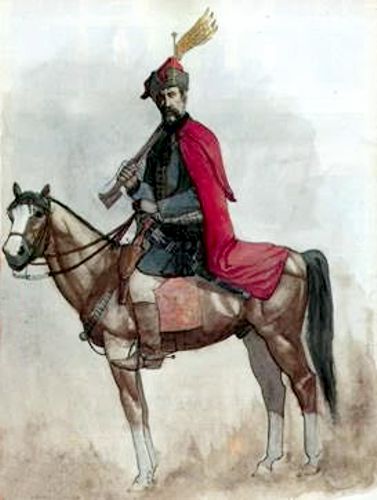
The Croatian soldier usually fought as light cavalry, only a few of them fought in the infantry. The nobleman’s uniform consisted of dark and narrow trousers reaching the ankles or knees, black pointed boots with a heel (Turkish model) that were more suitable for riding, a coat decorated with embroidery and fur, a white shirt with a tied scarf – podgutnica, a marten fur hat or helmet. Round the waist there was a tied leather strap to suspend the saber. The strap was often covered with a silk belt over it. Above all, they put on a cloak, usually a red coat. They used a saber (Hungarian or Turkish), a shorter sword, and a long sword to punch through armor. They used a buckle, a blade hammer, an axe and arquebus (a type of short gun), and were carrying at least two pistols. Some of the horsemen were wearing a long spear and a whip, as well as a composite bow and arrows. In order to achieve better speed on horseback, they decreased their protective gear.
The thirty-year war began in Bohemia when Czech Protestants threw two royal officials out of the Prague Hradcani court window on May 22, 1618. Although royal officials were not hurt on that occasion, that Czech protestant act was an insult to King Ferdinand. This action started an uprising, leading to the Thirty Years’ War. Many other European countries were also involved in the conflict, and mostly these were France and Germany.
It can be said that was the war between the southern and northern European countries, ie the countries of the Catholic faith against the Protestants.
The thirty-year war can be divided into four main phases:
- Czech rebellion
- Danish intervention
- Swedish intervention
- French intervention
The war ended with the Westfalen peace agreement, which was signed in 1648 immediately after the end of military conflicts between the German Emperor and France, and between the Emperor and Sweden. By this agreement, the Netherlands and Switzerland gained full independence. After the signing of peace agreement the state no longer influenced religious affairs and the influence of the Church diminished so there was greater religious tolerance. Almost all countries in Europe were affected by the war: The Kingdom of Sweden, the Kingdom of Bohemia, the Kingdom of France, the Kingdom of England, the Kingdom of Spain, Saxony, Denmark, Norway, the Ottoman Empire, the Holy Roman Empire and the United Provinces. It is said that more than 25% of the German population were killed. This fact shows how disastrous this war was.
The Croats – known under the general name Krovaten, Krabaten from the area of Banovina of Croatia and the Military Frontier Vojna Krajina – participated on the side of the Imperial Army. Warring with the Ottoman Empire, for a whole century, sharpened their instinct in dealing with and surviving in warlike times. In battles Croats would take the place on their wings so they could come to the opponent in the background. They had outstanding success since 1619 at the Battle of Zablati in the Czech Republic. It is also known that in 1623 they swam on the horses over the Neckar River and entered Heidelberg. Under the command of Albrecht von Wallenstein, they participated in the fighting for Mecklenburg, the battles on Rugen Island and the siege of Straisund. Once more they became famous during the siege of Magdeburg in 1631 when they again swam on the horses over the Lab River and first penetrated the city. They also stood out in the battles near Breitenfeld and Lutzen.
The murder of King Gustavo II Adolfo is also attributed to Croatian troops, although this information has never been confirmed. They also stood out in the battles at Nordlingen and Metz, in the attacks of Burgundy, the Netherlands and Pikardy. In 1636, they reached St. Denis near Paris, and in 1639, Saxony. How chaotic the situation was for the Croats is best shown by the fact that they were fighting on both sides in two battles. It happened by coincidence or because they found themselves in different mercenary groups. Even the Croatian governor called ban Nikola Zrinski took part in the war with around 3,000 horsemen from 1642 to 1643.
Later Napoleon once said: “I never had more braver and better soldiers. Croats, they are the best soldiers in the world. If I had only 100,000 Croats, I would conquer the entire world!”
Although the Croatis stood out in the Thirty Years’ War, with their skillfulness in the battlefield and with their courage, and above all their horsemanship abilities, they were still remembered for the scarf they wore around the neck. They called the item podgutnjak or podgutnica. The ties were made of different materials, rough, such as linen or wool worn by ordinary soldiers, to silk and cotton-wool worn by officers. They were tied with a firm knot under Adam’s apple or how the Croats called it – podgutnjak, the place under the throat.
The basic thesis of some writers and historians about Croatian soldiers wearing the cravat in the Thirty Years’ War is the story of a man’s loyalty to a beloved girl or woman. Such a romantic thesis, unfortunately, is far from true reality. Although the fact is that in Croatia there was such a habit that a girl or a woman tied the scarf around the man’s neck when he left for war. This custom existed only in some rural parts of Croatia, while in other parts as well as among the nobility it did not. The scarf that the Croatian soldiers carried around the neck had multiple purposes, and above all, an extremely important military purpose.
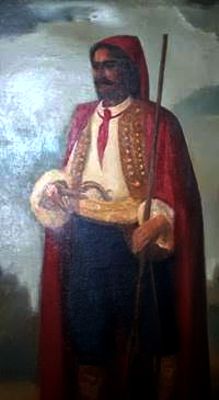 The knotted scarf around the soldier’s neck, which was red or black, was an easily noticeable and recognizable piece of uniform on the battlefield. It helped the Croatian soldiers to recognize themselves among the multitude of the others. The scarf attached to the neck by knot also had the basic purpose of holding the rest of the clothes together, which was of uttermost importance during the battle. Tied around the neck, it was also used to warm the soldier in the colder weather. Thus a soldier with a scarf could cover his mouth in cold weather or from blowing wind to prevent dust from coming into his mouth. In colder weather, the scarf could be tied around the head covering the ears or in the heat it could be used to protect from the sun, and it could easily sweep away the sweat from the soldier’s face.
The knotted scarf around the soldier’s neck, which was red or black, was an easily noticeable and recognizable piece of uniform on the battlefield. It helped the Croatian soldiers to recognize themselves among the multitude of the others. The scarf attached to the neck by knot also had the basic purpose of holding the rest of the clothes together, which was of uttermost importance during the battle. Tied around the neck, it was also used to warm the soldier in the colder weather. Thus a soldier with a scarf could cover his mouth in cold weather or from blowing wind to prevent dust from coming into his mouth. In colder weather, the scarf could be tied around the head covering the ears or in the heat it could be used to protect from the sun, and it could easily sweep away the sweat from the soldier’s face.
The so-tied knot shielded the neck of the soldier from irritation and had the purpose of helping the rider who had to turn his head fast from one to the other side. The tie protected the neck of the soldier in those movements from getting scratched by the clothes, which was very important in the moments of battle.
It also saved the soldier’s neck from various injuries he could have suffered in the battle. Namely, the opposing saber would slip from the scarf around the neck of the Croatian soldiers (especially officers wearing the silk scarf). Thus, the tie had the effect of reducing the strength of the opponent’s strike and protected the neck.
During the Thirty Years’ War Croatian soldiers often penetrated the opposing territory, and were often far from the rest of the army. They were then left alone without any help from the allied army. Because of the long lasting warfare with the Ottoman Empire, they were forced to learn to look after themselves as well as to help each other. In the case of wounding, the scarf was a very important item because it was used to bind the wound and at that time it served as the first bandage. The tie of bright red or black color was ideal as a bandage since the wounded soldier would not panic for bleeding as the blood on the scarf of that color was less noticeable.
Each army has its own code of honor. The Croatian soldiers at that time did not tolerate cowards – the soldier should not humiliate himself or his fellows with cowardice on the battlefield. There was an unwritten rule which stated that the one wearing a scarf firmly tied with the knot around the neck had to struggle until the scarf tore apart, and that was until death. Namely, the tie bound so tightly could only be cut off, which would also mean death for the soldier. A soldier who did not respect that codex would disgrace the person who gave him that tie. This would mean that a soldier would embarrass his girlfriend or wife, his family, his fellows, his country and his homeland. Therefore, cowardice was not an option for Croatian soldiers.
Also, if a soldier’s girl or wife gave a scarf and tied a knot, the knot was a symbol of the unbreakable love between that man and woman. Such a scarf symbolized communion, fidelity, and boundless love, which could only be cut off or ended with the death of soldier.
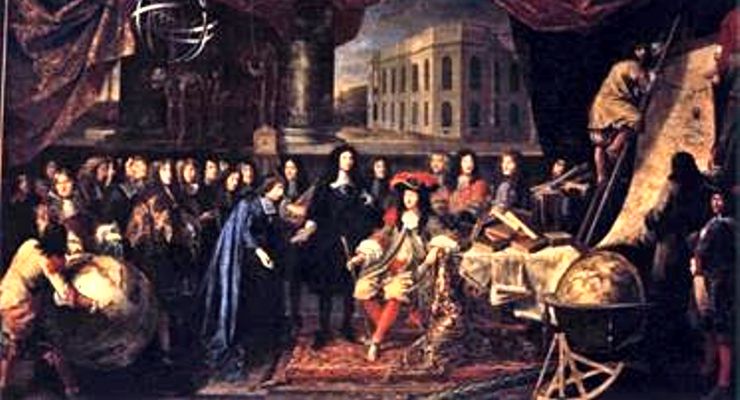
This Croatian custom of wearing the knotted scarf around the neck was completely unknown in Europe before this time and it was around 1650 the custom was accepted at the French court and gradually became a fashionable garment among the nobility. They adopted this new item of clothing and it was said to be worn a la Croate (“in the Croatian way”), which at the same time became the new root of the French word cravate. The French liked the knotted scarf so much that in 1643 a special regiment of Royal Cravates was formed, named after the Croats who were in its composition and wore a tie. In 1656, the first cravat was officially presented, and in 1667 the Regiment Royal Cravates were re-established.
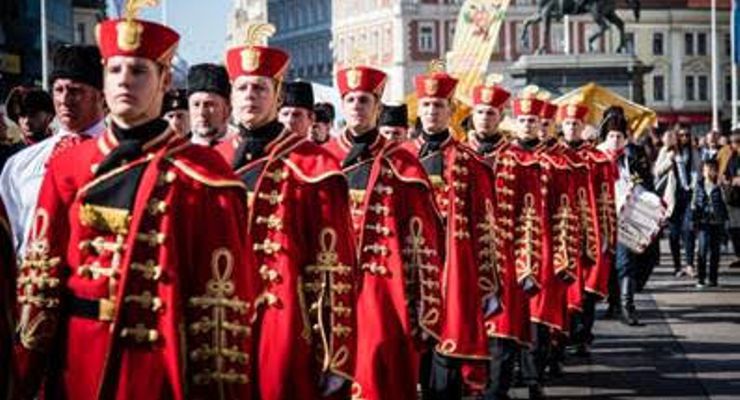
The cravat eventually became a symbol of progress in France, so that during the French Revolution people wore black ties as a sign of protest against backward, outdated ideas. The tie quickly spread to Europe. After the French it was accepted by the Belgians and the Dutch, hence it moved to the British Isles. The cravat was brought to England by Charles II, on his return from exile. He once said: “Bring me a tie or I shall die” .The arrival of the cravat on the British Isles was crucial to the further development of the tie.
Ten years later, the new fashion accessory won the whole of Europe as well as most of the colonies on the American continent, and later on all continents. Many countries have given their contribution to the development of the cravat. The tie as a fashion accessory became especially popular after the First World War when it was a frequent part of clothing combinations in the United States. The English made a real cult of the cravat. They changed ways of tying the cravat and even the color patterns. By the beginning of the 19th century, English cravats that had been white were introduced in a variety of colors, making them an indicator of one’s taste. Then, the American textile manufacturer Jesse Langsdorf made a revolutionary breakthrough and cut the fabric in three parts and then sewed them in a way that made it easier to tie, but also to produce. The Italians added new artistic elements to the cravat in order to emphasize the individual’s personality.
In 1998 two Cambridge scientists (Thomas Fink and Yong Mao) found out 85 theoretical possibilities of binding a standard tie knot (limiting the number of “moves” to nine) by using mathematical modelling, of which only ten knots correspond to conventional symmetry. Some mention about one hundred different ways of tying the knot. The knot type depends of the occasion, the pattern, its width and thickness, and of course the type of fabric from which the tie is made. The most popular ways to tie the necktie are a plain knot, a double knot, a small knot, a classic Windsor, and a semi-Windsor. The Windsor knot was named after its inventor, the Duke of Windsor. There is also the Atlantic style in which the knot is bound backwards, and there are also Albert knot, classic American knot, free American knot, king Tomislav’s knot and many others.
When it comes to the shape, there are wide and narrow ties, longer or shorter, bow ties, women’s ties, and even children’s ties. Today, the ties are elongated (“half-bottle shape”), which are also the most popular, then there are string ties or bow ties, and so-called Ascot-ties. The tie should not be too long. It is estimated that it should reach to the top of the buckle on the belt, but no more or less than that. Everything longer would seem inappropriate and untidy. In the past bow ties were only related to festive occasions, and today they can be worn in informal situations, let’s say in a retro style, too.
 It’s not uncommon to see a woman with a tie, especially a bow tie in combination with a blouse and skirt. Children’s ties are getting more and more popular, especially for some festive occasions.
It’s not uncommon to see a woman with a tie, especially a bow tie in combination with a blouse and skirt. Children’s ties are getting more and more popular, especially for some festive occasions.
The word “tie” is derived in English from the phrase “to tie a cravat” (to tie a scarf in the Croatian way). Since then, the tie has been used as a decorative garment all over the world, and a business meeting or ceremony today is unthinkable without a tie. Today, there are all kinds of neckties around the world, and they are an inevitable part of business wear and give the impression of sleekness, refinement and elegance.
The necktie is the most common gift in the United States for Father’s Day, because it belongs to the inevitable things that make up a man’s style. The world’s largest necktie manufacturers are the Chinese, while the Japanese are the biggest buyers of this garment.
Oscar Wilde wrote in “The importance of Being Ernest” – that a well-tied tie is the first step towards the serious life. Nowadays the tie is a symbol of men’s elegance, a symbol of success, a symbol of belonging to a certain elite, a social group or a community.


